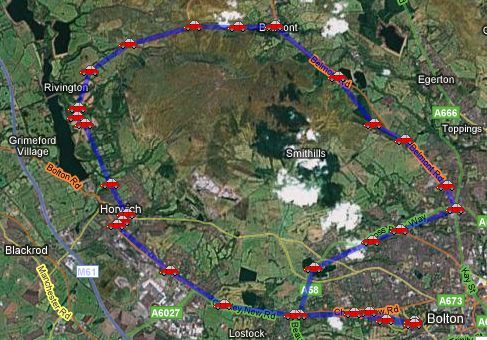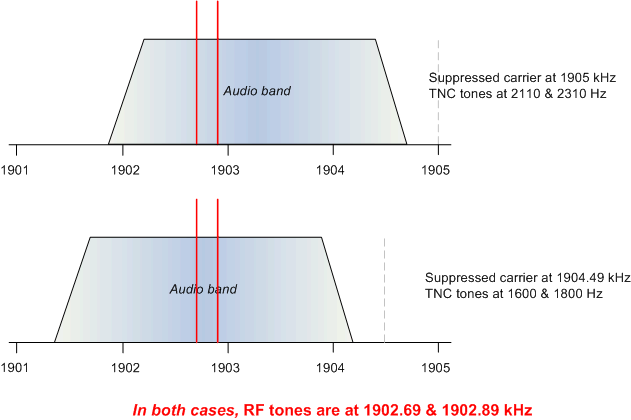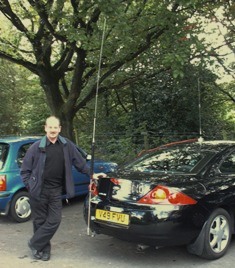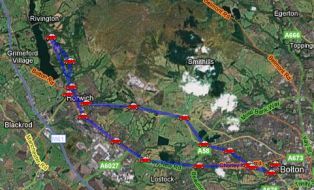An APRS net on Top Band?
Advantages of MF
The Bolton RAYNET Group have been looking at the potential of ground-wave propagation on the MF band (160m) to support operations around difficult terrain (e.g. the Pennine moors). As well as voice and data comms, we were interested to find out if APRS could also be useful on this band.
The picture opposite shows the track of G0GRX-15 on a journey around Winter Hill, transmitting beacons every 2 minutes. These were all received directly off-air, using a "long-wire" aerial at my QTH in the centre of Bolton. The mobile station used 20W into a centre-loaded mobile whip, and "narrow" (300 baud) FSK was used with suppressed-carrier modulation.
On 2m FM, I would only be able to cover the South-East quadrant of this journey, but the MF coverage is solid around the whole circuit, even when screened from me by 1200ft of hill!
|
 |
Transmitting APRS on MF
As with 2m APRS, a TNC or Tracker is used to generate the AFSK modulation, which is applied to the transmitter's microphone or "DATA" socket.
However in order to reduce the signal bandwidth, 300 baud signalling is used, with 200 Hz tone spacing, and the transmitter is operated in SSB or "DIG" mode.
Frequency-netting
This is rather more tricky with suppressed-carrier-FSK than on FM-AFSK!
The net controller (or station with the most stable oscillator!) should be used as the reference, with all other members "netting-in" to that signal.
To compound the problem, some TNCs use tones at 2110 & 2310 Hz, while others use 1600 & 1800 Hz!
For example, if the net controller sets his carrier frequency to 1905 kHz, and uses 2110 & 2310 Hz tones with LSB modulation, then the RF FSK signals will be at 1902.89 and 1902.69 kHz. All other stations using 2110 & 2310 should set their carrier frequencies to 1905 kHz, and "fine-tune" if necessary.
However, those using 1600 and 1800 Hz tones will need to set their carriers 510 Hz lower (i.e. 1904.49 kHz) to net correctly onto the tones, as shown in the diagram:

See the notes on TNC tones on my main
HF-APRS page.
On-air testing
 |
In September 2007, we conducted a test with two mobile stations driving around Winter Hill.
Both mobiles had centre-loaded mobile whip aerials, but one used 20W from an IC706, with a TT3 Tracker, while the other had just 5W from an FT817, and an OT1+ Tracker.
The signals were picked up off-air using a long-wire aerial at my home QTH using an IC735 and a PC running AGW Packet Engine and UIView32.
Once we'd set up the audio levels and were netted-in, no further adjustments were made, and yet we were still on-frequency after a couple of hours' driving (over bumpy roads too!).
Since the AGWPE and Tracker use different audio tones, the mobile transmitters were set for a carrier frequency of 1904.49 kHz, while the base station receiver was tuned to 1905 kHz, as explained above. |
 |
Combined voice and data operation?
This is the
burst-after-voice mode.
Note that as explained above, this will only work if all the stations in the net use TNCs and Trackers with the same audio tones: if not, either their voices or packet tones will be 510 Hz off-frequency!



